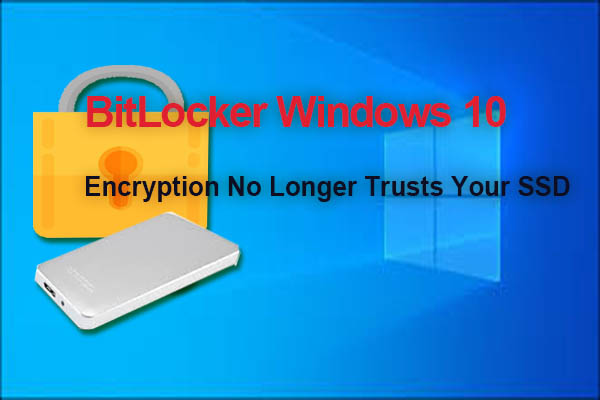Many Users Report That BitLocker Slows Down SSD Performance
Considerable speed difference between BitLocker Enabled and Disabled NVME GEN 4 1TB (and rest of my encrypted by BitLocker) SSD/HDD in Win 10…https://answers.microsoft.com/en-us/windows/forum/all/considerable-speed-difference-between-bitlocker/22c869eb-5022-469c-bbfa-21b67ec44ee6
I have a fairly powerful machine (i7-11800H, 64GB RAM) with a Samsung 980 Pro 2TB (latest Firmware) running on Windows 11 Pro 21H2. I decided to enable BitLocker and found out that it drastically cuts performance… https://answers.microsoft.com/en-us/windows/forum/all/why-dos-bitlocker-destroy-nvme-ssd-performance-for/def6f7db-c528-436e-9ca5-d0bab82b5e5e
BitLocker is a security feature in Windows 10/11 Pro, Enterprise, and Education editions. It provides encryption for entire volumes, addressing the threats of data theft or exposure from lost, stolen, or inappropriately decommissioned devices.
However, some users report that BitLocker slows down SSD performance. They also posted SSD performance comparison charts when BitLocker is enabled and disabled to prove what they say is true.
Does BitLocker Really Slow Down SSD Performance?
TomsHardware conducted extensive tests of the BitLocker feature with three scenarios: unencrypted (no BitLocker), software BitLocker (the Windows 11 Pro default), and hardware BitLocker (OPAL) enabled.
Then, it was discovered that the speed of SSDs can be reduced by up to 45 percent, depending on the application.
The hardware-based encryption (OPAL) performed around 20% to 25% higher than the unencrypted (no BitLocker) mode, while the software-based BitLocker performed around 20% lower than the unencrypted (no BitLocker) mode. Therefore, the maximum difference can reach 40% to 45%.
Why does the software-based BitLocker encryption affect the PC performance? The reason may be that the processor is constantly busy encrypting and decrypting the data on the SSD during all write and read processes. Thus, it has an impact on the performance of the system.
How to Solve the Issue
If your computer is an OEM computer, BitLocker has likely been enabled by default. But if the computer is built by yourself, the BitLocker may be not enabled. If you are not sure about the BitLocker status, you can check that in the following 2 ways:
- Open File Explorer and check if there is a lock mark on the drives. If there is, it means that the BitLocker is enabled.
- Open Command Prompt as an admin and enter the command: manage-bde -status. It will return the volume status. You can see if it is BitLocker encrypted.
How to get rid of the issue that BitLocker slows down SSD performance? So far, Microsoft has not rolled out a patch to fix the problem, and it will not abandon enabling BitLocker by default. To solve this issue, you need to turn off BitLocker manually. You can go to Control Panel > System and Security > BitLocker Drive Encryption to turn it off.
What if you want to switch to hardware BitLocker encryption? The process will be a little complicated. You should reinstall Windows on the hard drive. The process can be as follows:
- Disable BitLocker first.
- Clone the Windows with BitLocker disabled to another drive.
- Enable hardware BitLocker on the computer drive and wipe it.
- Clone the Windows back to the drive.
To clone the Windows, you can use MiniTool Partition Wizard. To wipe the computer, you can also use this tool. As for the detailed guide, you can refer to the following 2 posts.
MiniTool Partition Wizard DemoClick to Download100%Clean & Safe


![BitLocker Decryption Not Working on Windows 10/11? [Full Fix]](https://images.minitool.com/partitionwizard.com/images/uploads/2023/07/bitlocker-decryption-not-working-thumbnail.jpg)
User Comments :